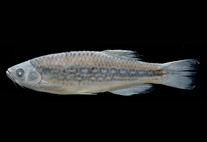Abstract
We describe a new species of terrestrial frog of the genus Bryophryne (Anura: Craugastoridae) from the wet puna and elfin forests of the Amazonian versant of the Andes. The new species seems to be restricted to high altitude environments at elevations between 3506–3651 m in the area now protected by Megantoni National Sanctuary and Manu National Park (Distrito de Echarate, Provincia La Convención, Departamento Cusco, Peru). The new species is characterized by lacking vomerine processes of vomers, by having tympanic annulus and tympanic membrane not evident through the skin, smooth dorsal skin with scattered warts, conspicuous dorsolateral, middorsal, and occipital folds, warty flanks, areolate skin on ventral surfaces of the body, and by lacking finger and toe fringes and basal web on feet. In life, specimens have bright and highly variable dorsal coloration that ranges from olive-green to red with variable combinations of red or orange marks (red or orange in the green form and olive-green in the red form). Molecular phylogenetic analyses of mitochondrial and nuclear DNA place the new species within the genus Bryophryne and as sister group of B. cophites. Bryophryne bustamantei, also sequenced for this study, is found as the sister group of the clade formed by B. cophites and the new species. Bryophryne is found as sister group of Psychrophrynella in maximum likelihood analyses and as the sister group of a large clade of holoadenines in parsimony analyses. The genus Bryophryne now contains nine species, all of them distributed along the Cordillera Oriental of the Peruvian Andes, southeast of the Apurimac River valley.

